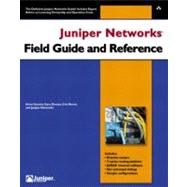
Aviva Garrett is the Director of Technical Publications at Juniper Networks. With coauthors Cris Morris and Gary Drenan, Aviva edited the work of the dozens of Juniper Networks writers, editors, and engineers who contributed to the Juniper Networks® Field Guide and Reference, the authorized Juniper Networks field manual.
Gary Drenan is Senior Technical Writer at Juniper Networks. With coauthors Aviva Garrett and Cris Morris, Gary edited the work of the dozens of Juniper Networks writers, editors, and engineers who contributed to the Juniper Networks® Field Guide and Reference, the authorized Juniper Networks field manual.
Cris Morris is Senior Editing Manager at Juniper Networks. With coauthors Aviva Garrett and Gary Drenan, Cris edited the work of the dozens of Juniper Networks writers, editors, and engineers who contributed to the Juniper Networks® Field Guide and Reference, the authorized Juniper Networks field manual.
The New copy of this book will include any supplemental materials advertised. Please check the title of the book to determine if it should include any access cards, study guides, lab manuals, CDs, etc.
The Used, Rental and eBook copies of this book are not guaranteed to include any supplemental materials. Typically, only the book itself is included. This is true even if the title states it includes any access cards, study guides, lab manuals, CDs, etc.